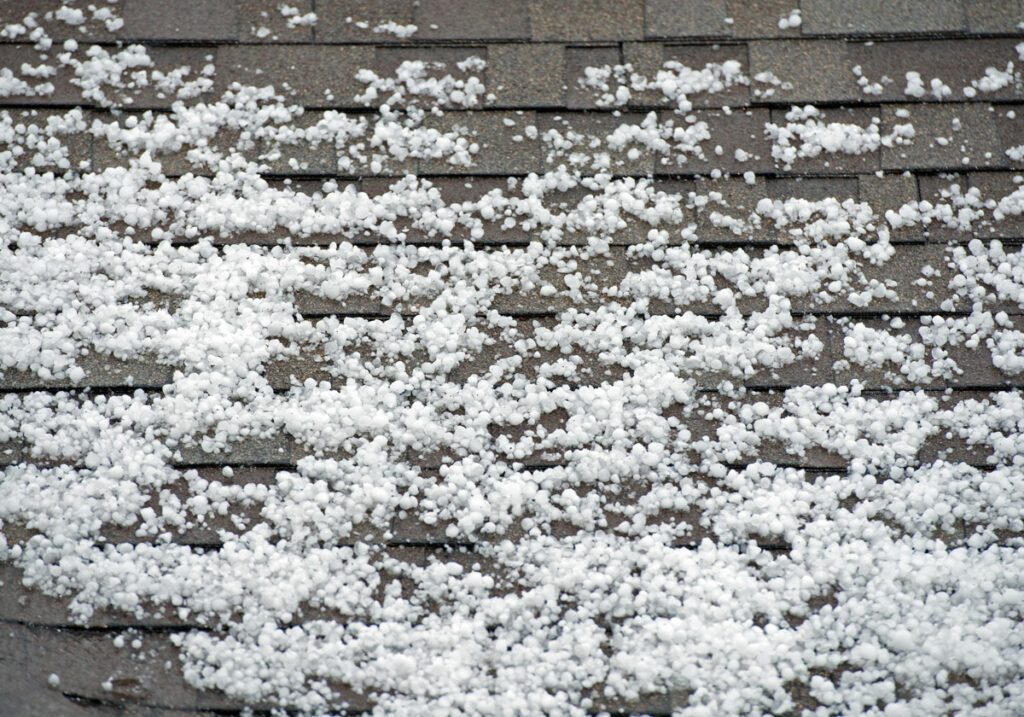What Signs Of Roof Damage Should A Homeowner Look For After A Hail Storm?
After a hail storm, it’s crucial for homeowners to inspect their roofs for any signs of damage promptly.

All Trades Enterprise Inc. is working on roof hail damage that has occurred in Colorado Springs, Monument, CO, Pueblo, Woodland Park, Fountain, CO, and surrounding areas.
These are some crucial indicators to look for:
- Dented or Damaged Shingles: Hail can cause shingles to become dented, cracked, or even torn off entirely. Look for visible signs of damage such as dents, cracks, or missing pieces. Pay close attention to areas where the hail impact might have been the strongest, such as slopes facing the storm.
- Granule Loss: Hail can dislodge the granules on the surface of asphalt shingles, leaving bare spots. Check for areas where the granules have been stripped away, as this can weaken the shingle and make it more susceptible to leaks and deterioration over time.
- Leaks or Water Stains: After a hail storm, it’s essential to inspect your attic for any signs of water leaks or water stains on the ceiling. Even small punctures or cracks in the roof can lead to water infiltration, which can cause significant damage if left unchecked.
- Dented Gutters and Downspouts: Hail can also damage gutters and downspouts, causing them to become dented or bent out of shape. Inspect these components for any visible signs of damage, as they play a crucial role in directing water away from your home’s foundation.
- Cracked or Broken Roof Vents: Roof vents are vulnerable to hail damage, as they often have thin metal or plastic covers that can be easily cracked or broken by hailstones. Check your roof vents for any signs of damage and replace them if necessary to prevent water infiltration and moisture buildup in your attic.
- Inspect Flashing and Seals: Hail can dislodge or damage flashing around chimneys, vents, and skylights, as well as seals around roof penetrations such as pipes and vents. Inspect these areas carefully for any signs of damage or deterioration, as they are critical for maintaining a watertight seal on your roof.
In conclusion, it’s essential for homeowners to thoroughly inspect their roofs for any signs of damage after a hail storm to prevent potential water infiltration and costly repairs down the line. If you’re unsure about the extent of the damage or feel uncomfortable inspecting your roof yourself, it’s best to consult with a professional roofing contractor who can assess the situation and recommend the necessary repairs or replacements.
Should you have any questions, feel free to give us a call.




